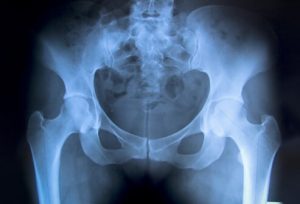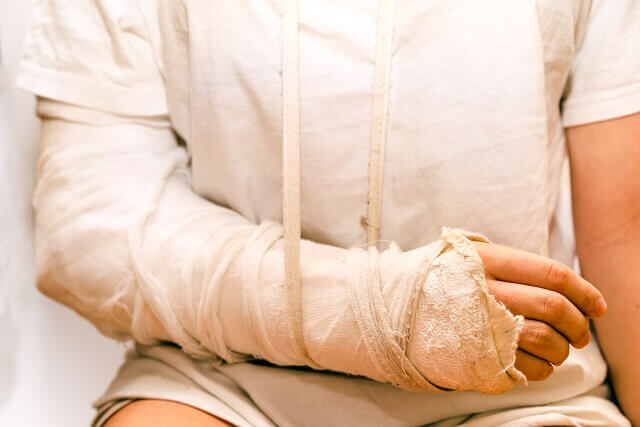Unexplained Broken Bones and Fractures inside a Nursing Home or Assisted Living Facility: How Did This Happen?
Nursing home fractures occur for a number of reasons, but there is only one cause. A bone fracture is the result of too much pressure on the bone. The most common cause of broken bones in nursing facilities is trauma.
If your loved one suffered an unexplained fracture inside a nursing home, there is a strong possibility that this is due to an unreported traumatic event, like a fall, assault or physical abuse.
At Senior Justice Law Firm, nursing home abuse cases are our law firm focus. Let our specialized experience help you get answers relating to your loved one’s mystery fracture. We offer 100% free, no obligation case consultations, and we only get paid if you win your case.
Begin the investigation into your loved one’s unexplained broken bone by calling our law firm now at 1-888-375-9998.

Call the nursing home abuse attorneys at Senior Justice Law Firm for a free broken bone case consultation
Bones Do Not Break Themselves, Even in Elderly Patients
Senior citizen nursing home patients with osteoporosis or low bone density are more prone to broken bones. Often, what would be a routine fall in a healthy person results in a serious bone fracture in elderly patients. Broken bones are far more dangerous in nursing home patients as well. The Centers for Disease Control reports that more than 1,800 elderly patients die in nursing home fall/fracture related injuries each year in the U.S. In 2008, 19,700 older adults died from fall injuries and in 2009, 2.2 million fall injuries were treated at emergency rooms across the country.
Falls are the leading cause of injury and fractures in patients 65 years or older. Hip fractures, skull fractures, and brain bleeds are particularly deadly to elderly patients in nursing homes and other healthcare facilities. Unexplainable broken hips and skull fractures must be investigated, as they are likely caused by patient falls or physical abuse.

Unexplained Broken Bones in Nursing Homes
Millions of America’s elderly patient population suffer unexplained fractures each year. For most long-term care facility residents, assistance is needed with activities of daily living. This means that the patient needs help showering, walking and transferring out of bed. The responsibility for assistance with movement falls on the nursing home or hospital. Sadly, sometimes the nurses are neglectful in their duty and patients can fall and break bones.
If the patient is nonverbal due to their underlying condition, the fracture may go undiscovered. Worse still is the nurse may not report the injury because he or she is afraid of facing liability for the fracture.
Our nursing home negligence lawyers have frequently encountered concealment of the true cause of a nursing home fracture. Don’t accept the nursing home’s narrative at face value. If you suspect neglect, conduct an investigation.
Broken Bones and Broken Promises: The Nursing Home Cover Up
When a family asks about how an unreported fracture happened in their loved one, they commonly get a number of generic responses. “She has brittle bones”, “Osteoporosis” or “She is so weak, the bone broke itself.” Conveniently, these responses never assign liability to the nursing home or hospital caretakers.
Many cases involving facility cover ups focus on the time wasted between the initial fracture and the first time medical attention was received. Our lawyers have handled cases where nursing home residents have fallen, developed a fracture and suffered for weeks until the injury was noted by a family member. Only after a loved one reports the signs of distress does the patient finally see an outside physician or hospital. This is punitive conduct.
If your loved one suffered an unexplained or unreported broken bone while residing in a hospital, nursing home or long term care facility, demand answers. Contact our qualified elder abuse lawyers to begin your free case consultation and investigation into what really caused that broken bone. Call us now at 888-375-9998 to start the conversation.
Use Your Common Sense if Your Family Member is Diagnosed with a Mysterious Broken Bone in a Facility
If a patient is unable to physically get up and walk on their own, yet is diagnosed with a trauma-induced fracture from a fall, it becomes apparent what happened. Either the resident was dropped, or suffered an unreported fall.
Since the non-ambulatory patient broke their bone and is unable to put themselves back in bed, a negligent nurse likely found the patient on the floor but failed to document the injury. This is a serious breach of the standard of care, as this patient now languished in bed for days, maybe weeks, with an undiagnosed broken bone. This kind of patient abuse is grounds for a nursing home abuse lawsuit. ‘Unexplained fractures’ ‘unwitnessed falls’ and ‘broken bones of unknown origin’ are all red flags of potential elder abuse and should be investigated.
Types of Unexplained Bone Fractures
Not every fracture is created equally. Usually, fracture types can be determined by x-ray. Although most fractures in elderly nursing home residents are due to trauma, occasionally, extremely brittle bones will break due to routine motion. The different types of unexplained fractures include:
- Traumatic fractures – This fracture is caused by trauma or injury. As people age, their coordination skills tend to decrease. This means that older adults are more susceptible to falls. A fall resulting in a fracture would be considered a traumatic fracture. An unexplained traumatic fracture is troubling because the patient presumably fell and the fall went unreported.
- Compression fractures – A compression fracture is a spontaneous breaking of the bone and is unrelated to trauma. People with frail bones and osteoporosis may experience compression fractures. An unexplained compression fracture should be investigated to confirm that the fracture was not actually trauma induced. Unfortunately, in-house x-rays can be misinterpreted to conceal the fact that a fracture is actually from a fall.
- Stress fracture – Stress fractures, also referred to as hairline fractures, are tiny breaks in the bone due to repetitive motion. The common locations for these stress fractures are the lower parts of the legs and feet. Many times the patient will not know that the bone is broken because this kind of fracture is so slight. Stress fractures left untreated can result in a more serious fracture. For this reason, the nursing home staff is responsible for monitoring the patient and reporting any signs of an unexplained bone break (swelling, pain, redness, tenderness).
Common Nursing Home Fractures
Some of the more frequent broken bones our attorneys see involve:
- Hip Fractures
- Pelvic Fractures
- Femur Fractures
- Vertebrae and Back Fractures
- Wrist and Ankle Fractures
- Skull Fractures
Spotting the Red Flags with Undocumented Broken Bones

When we place a loved one in a facility, the staff is responsible for implementing fall preventative measures to reduce the chances of a fall. It is required that the nursing home assess every patient’s fall risk and come up with a plan to prevent falls. When a patient is found to have an unreported fracture in a nursing home, alarm bells should go off. An unexplainable fracture may be an indicator of elder abuse and should be investigated immediately. Many unexplained fracture problems in nursing homes relate to understaffing or improperly trained nurses and CNA’s.
Unreported broken bones may indicate a concealed fall, or worse yet, physical abuse by staff or other residents.
Free Broken Bones Case Consultation vs. a Nursing Home
If you would like to receive a complimentary case evaluation from Senior Justice Law Firm involving your fracture case against a nursing home, call or chat with us today. Our compassionate abuse and neglect lawyers can help you get answers to your questions surrounding your loved one’s mysterious bone fracture in a nursing facility.
Sources:
American Family Physician, “Falls in the Elderly.”
Preventing Fractures in Elderly People. Woolf, A.D. & Akesson, K (2003). British Medical Journal, 327 (7406), 80-102.
Impact Near the Hip Dominates Fracture Risk in Elderly Nursing Home Residents Who Fall. Hayes, Wilson C. et. al. Calcified Tissue International, March 1993, Volume 52, Issue 3, 192-198.
http://link.springer.com/article/10.1007/BF00298717
Connecticut Health I-Team, “Medication Errors, Falls Result in Nursing Home Fines.”
MedicineNet, “Falls and Fractures in Seniors.”
Updated 5-1-2020

